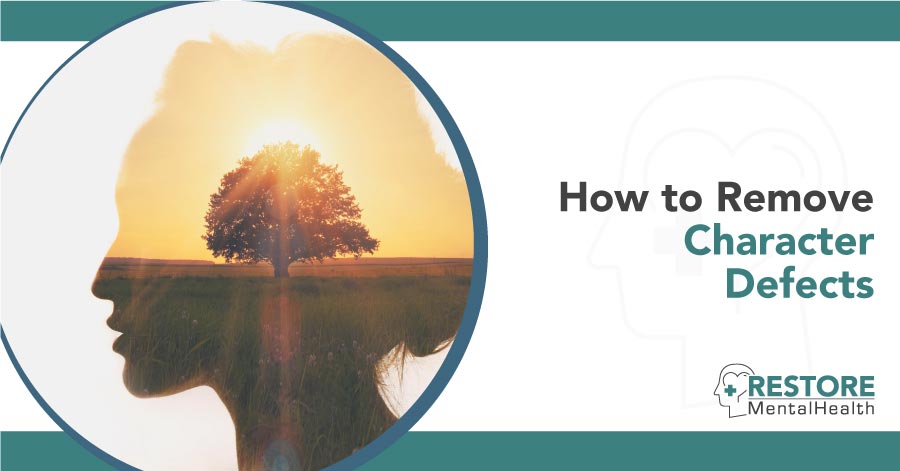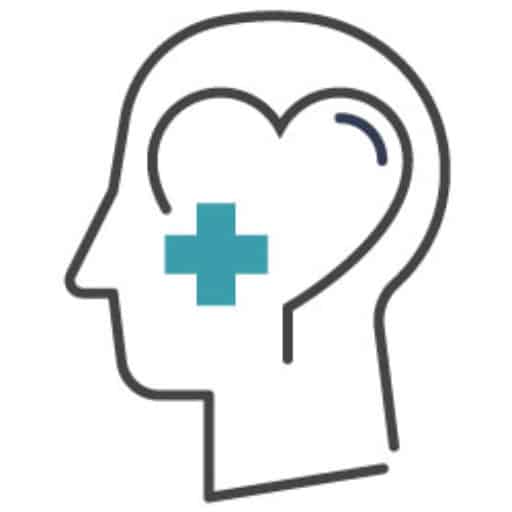Since its genesis by Alcoholics Anonymous in the 1930s, the 12-step program remains one of the most widespread and effective alcohol and drug abuse interventions. As you progress through the program, you’ll encounter the fourth step, which requires you to conduct an honest life evaluation to identify how your character defects hinder your recovery journey. Conducting such a self-analysis isn’t easy, but it’s necessary if you’re to proceed to the other eight steps successfully. So, what exactly are character defects and shortcomings, and how can you remove them?
What Is a Character Defect?
A character defect is any aspect of your personality that negatively impacts your thinking and behavior. It determines how you interact with the world and the people around you. Some defects can even drive you to hurt the people you love mentally, emotionally or physically.
The AA program uses the phrase “character shortcomings” synonymously with character defects. Defects of character or shortcomings contribute to the development of negative behavior patterns. Through the 12-step program, you can identify the character defects that add to your alcohol and drug abuse issues and work on them to move to a healthier space.
List of Common Character Defects
An endless number of character defects exist, each affecting our thoughts and behaviors differently. To successfully undertake the fourth step, identify the character shortcomings rather than their outcomes.
The character defect list from AA includes these 30 personal shortcomings:
- Anger
- Apathy
- Bigotry
- Cowardice
- Criticizing
- Cheating
- Dishonesty
- Egotism
- Excessiveness
- Fear
- Greed
- Guilt
- Hatred
- Hopelessness
- Impatience
- Jealousy
- Kleptomania
- Laziness
- Manipulation
- Negative thinking
- Overcompensation
- Pride
- Procrastination
- Resentment
- Self-importance
- Self-pitying
- Thoughtlessness
- Unfaithfulness
- Vulgarity
- Wastefulness
AA lists these shortcomings as character defects because they contribute to persistently negative behavior patterns that are detrimental to you and those around you.
How Character Defects Contribute to Addiction
Examples of Character Defects
Here’s a closer look at how some specific character defects can contribute to an individual’s addiction:
- Denial. The person will minimize the severity of the addiction to themselves and others.
- Dishonesty. Someone skilled at lying will be able to conceal their addiction longer and fool those around them.
- Impulsivity. This can lead to high-risk and dangerous behaviors, including progressing into “harder” substances.
- Isolation. Being too isolated can cause a person to become depressed, and they may turn to substances to self-medicate.
- Selfishness. An addiction can take over every aspect of a person’s life and make them choose their substance over all else, causing harm to loved ones along the way.
Do I Have All Character Defects?
Human beings aren’t perfect, so we all have character defects with varying degrees of severity. Looking around, you can identify some personality traits your loved ones possess that limit them from achieving their full potential.
Fortunately, it’s almost impossible to have all the character defects simultaneously. While many character shortcomings may overlap, the average person isn’t entirely composed of defects.
If you have one or more AA character defects, don’t think you’re an evil, irredeemable human being. The fact that you’re trying to identify your character defects and work on them means you still have a chance to improve your life.
Resolving your AA character defects won’t automatically eliminate your drug and alcohol issues, and vice versa. However, the 12-step program can help you holistically improve your life beyond managing alcohol and drug use.
How to Identify Your Character Defects
1. Introspect
The first step to identifying your defects is introspection. The 12-step program refers to this process as making a fearless moral inventory. It involves looking inward to see what drives your actions.
Knowing what personal characteristics qualify as defects may be difficult if you’ve never done a thorough introspection before. The fact that there’s no exhaustive list of character defects can make the process even harder.
To make it easier, pass each characteristic through a brief analysis to see if it qualifies as a shortcoming. A simple way to conduct the analysis is by using two levels of questions to evaluate each characteristic and determine whether it’s a character defect.
For the first level, ask yourself:
- How does this quality influence my behavior?
- What are the consequences of the resulting behavior?
If answers to both questions are negative, the quality is a character defect. You can then move to the next round of questioning by asking:
- How does this character defect contribute to my substance abuse problems?
- How does the character defect affect my recovery journey?
2. Record
Records of your introspection’s results prove invaluable when you work on removing character defects.
You can use any method to record your character defects. Many people journal their shortcomings on paper or digital diaries. If you aren’t much of a writer, you can use sound or video recordings.
Make a list of character defects as you identify them, ensuring none are left behind. Note how each shortcoming contributes to what you think and how you behave. Assess how the defects impact your self-perception and interactions with others. Most importantly, be honest about how the defects affect your journey to recovery.
What to Do With Your List of Character Defects
1. Actively Work on Removing Defects
Knowing which parts of your personality prevent your life’s progress is insufficient. You must adopt honesty, humility and diligence when you set out to remove character defects.
Research qualities that are the direct opposite of each shortcoming on your list of character defects. Try to display these new characteristics in your daily life.
Some people have found that working on one defect at a time is a good way to make progress. Return to your character defects list and select one area you can improve on for a specific period.
For example, if you identify the defect of thoughtlessness, try showing others small acts of thoughtfulness. Do a chore around the home that normally falls to your spouse, or get groceries for your neighbor, parent or friend. When you’re out, make a point of giving several unhoused individuals some change.
2. Be Patient
You didn’t develop negative characteristics overnight, so you shouldn’t expect to get rid of them instantly. Much like sobriety, removing character defects is a lifelong journey.
Expect to fall short of the new standards you’re trying to hold yourself to, especially at the beginning.
If you regress to your old ways, don’t make excuses or try to rationalize the bad behavior. Instead, be humble enough to accept your mistakes and restart the process of removing character defects.
3. Get Help
Over 2 million people worldwide follow the AA model for alcohol abstinence. Thus, you may be at step four simultaneously with hundreds of thousands of them. Instead of trying to go at it alone, contact your local AA group to connect with a support system.
Receiving help from people who understand what you’re going through will provide a solid foundation for persevering in your recovery journey. A healthy support system will keep you accountable and cheer you on as you work to remove character defects.
Step Six and Character Defects
The role of analyzing and removing character defects doesn’t end at step four. Step six of the 12-step program prepares individuals to have God remove all their character defects. In this step, you’re truly letting go and believing in your progress and the recovery you’ve made. This is a critical step, as it will help you accept that you’re moving beyond the behaviors that led you toward addiction.
By the end of the 12 steps, you’ll feel like a new, improved version of you.
12-Step Programs at Restore Mental Health
You can find the strong support system you need at Restore. We’ve helped hundreds of patients go through our inpatient recovery and outpatient 12-step programs. You can build a robust and supportive community with others experiencing the same challenges and successes as you. Call now to see how our experts can help you remove character defects and successfully walk the path to recovery.



